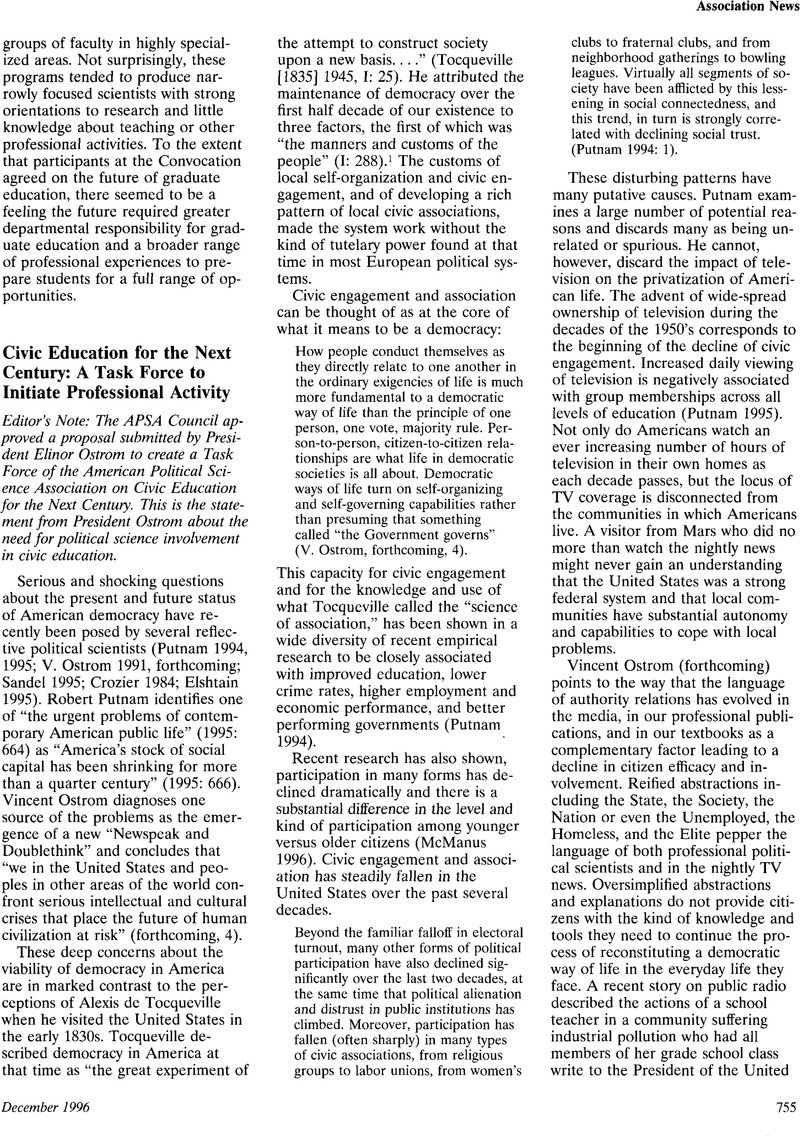Crossref Citations
This article has been cited by the following publications. This list is generated based on data provided by Crossref.
Schachter, Hindy Lauer
1998.
Civic Education: Three Early American Political Science Association Committees and Their Relevance for Our Times.
PS: Political Science & Politics,
Vol. 31,
Issue. 3,
p.
631.
Mann, Sheilah
1999.
What the Survey of American College Freshmen Tells Us about Their Interest in Politics and Political Science.
PS: Political Science & Politics,
Vol. 32,
Issue. 2,
p.
263.
Matthews, Todd L.
and
Howell, Frank M.
2006.
Promoting Civic Culture: The Transmission of Civic Involvement from Parent to Child.
Sociological Focus,
Vol. 39,
Issue. 1,
p.
19.
D’Agostino, Maria J.
2010.
Measuring Social Capital as an Outcome of Service Learning.
Innovative Higher Education,
Vol. 35,
Issue. 5,
p.
313.
Matthews, Todd L.
Hempel, Lynn M.
and
Howell, Frank M.
2010.
Gender and the Transmission of Civic Engagement: Assessing the Influences on Youth Civic Activity*.
Sociological Inquiry,
Vol. 80,
Issue. 3,
p.
448.
Schneider, Laura
and
Buehler, Melissa J.
2012.
Calling All Citizens! Understanding the Value and Need for a Substantive Civic Knowledge.
SSRN Electronic Journal,
Pellegrino, Anthony M.
Zenkov, Kristien
and
Calamito, Nicholas
2013.
“Pay attention and take some notes”: Middle school youth, multimodal instruction, and notions of citizenship.
The Journal of Social Studies Research,
Vol. 37,
Issue. 4,
p.
221.
Lancaster, T. D.
2014.
"Political Monitoring" as an Analytical Concept: A Lasting Legacy?.
Publius: The Journal of Federalism,
Vol. 44,
Issue. 2,
p.
249.
Lancaster, Thomas D.
and
Abdalla, Reem
2018.
Independent Regulatory Authorities as Mechanisms of Political Monitoring.
Indian Journal of Public Administration,
Vol. 64,
Issue. 3,
p.
331.





